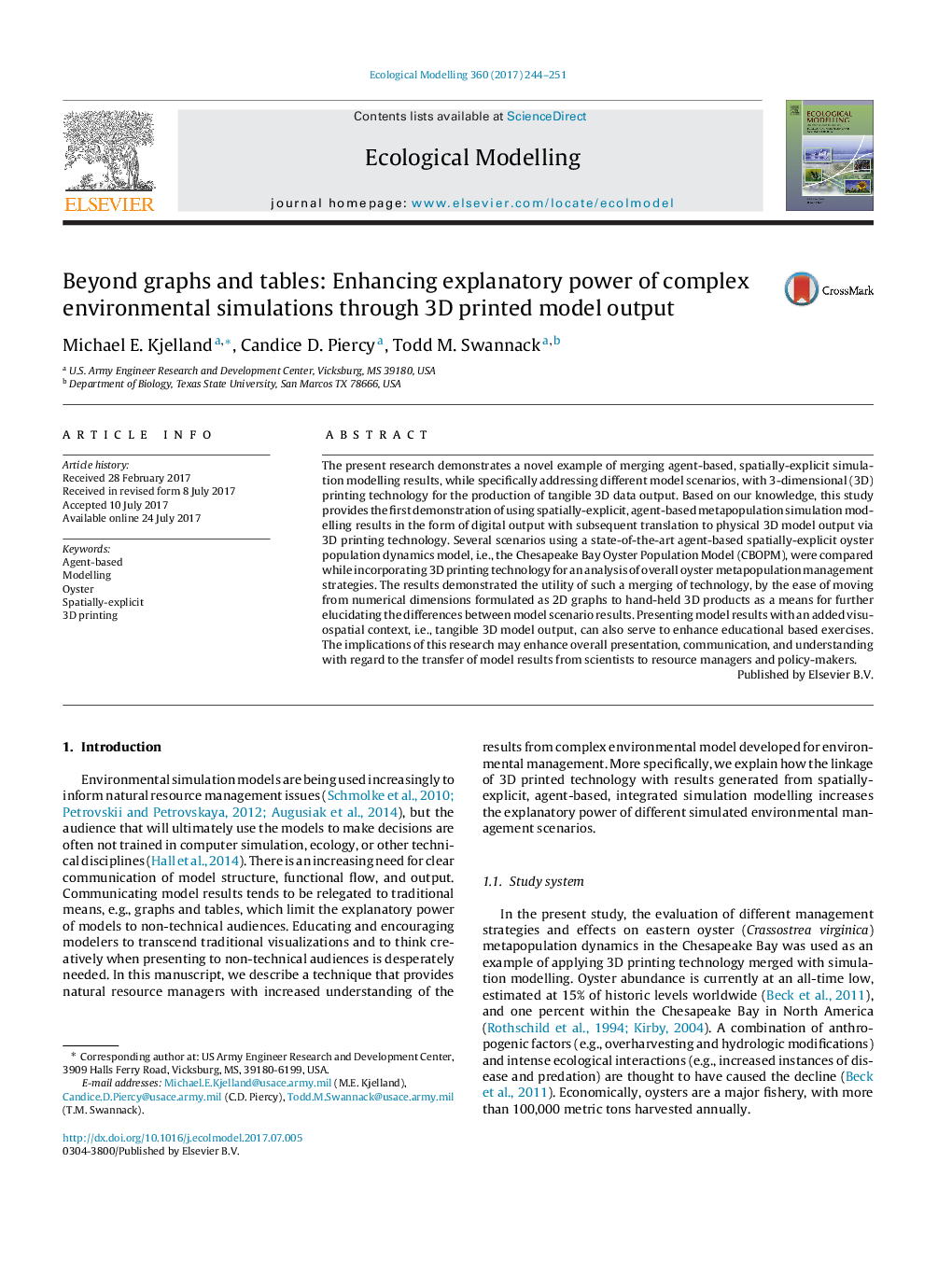| Article ID | Journal | Published Year | Pages | File Type |
|---|---|---|---|---|
| 5742064 | Ecological Modelling | 2017 | 8 Pages |
â¢Demonstration of complex simulation modelling and 3D printed output.â¢Comparison of 2-D graphs to hand-held 3D printed model products.â¢3D printed model results for enhancing communication and understanding.
The present research demonstrates a novel example of merging agent-based, spatially-explicit simulation modelling results, while specifically addressing different model scenarios, with 3-dimensional (3D) printing technology for the production of tangible 3D data output. Based on our knowledge, this study provides the first demonstration of using spatially-explicit, agent-based metapopulation simulation modelling results in the form of digital output with subsequent translation to physical 3D model output via 3D printing technology. Several scenarios using a state-of-the-art agent-based spatially-explicit oyster population dynamics model, i.e., the Chesapeake Bay Oyster Population Model (CBOPM), were compared while incorporating 3D printing technology for an analysis of overall oyster metapopulation management strategies. The results demonstrated the utility of such a merging of technology, by the ease of moving from numerical dimensions formulated as 2D graphs to hand-held 3D products as a means for further elucidating the differences between model scenario results. Presenting model results with an added visuospatial context, i.e., tangible 3D model output, can also serve to enhance educational based exercises. The implications of this research may enhance overall presentation, communication, and understanding with regard to the transfer of model results from scientists to resource managers and policy-makers.
Graphical abstractDownload high-res image (148KB)Download full-size image
